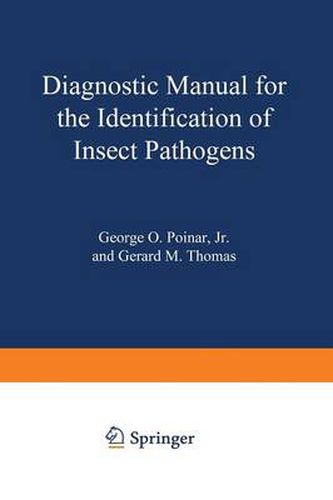Readings Newsletter
Become a Readings Member to make your shopping experience even easier.
Sign in or sign up for free!
You’re not far away from qualifying for FREE standard shipping within Australia
You’ve qualified for FREE standard shipping within Australia
The cart is loading…






This title is printed to order. This book may have been self-published. If so, we cannot guarantee the quality of the content. In the main most books will have gone through the editing process however some may not. We therefore suggest that you be aware of this before ordering this book. If in doubt check either the author or publisher’s details as we are unable to accept any returns unless they are faulty. Please contact us if you have any questions.
This manual was prepared for the diagnosis of insect diseases caused by infectious agents. The agents (or pathogens) included here are fungi, protozoans, bacteria, viruses, and rickettsias. The present work was prepared after much deliberation and discussion with students and teachers who felt a guide of this type would be valuable for diagnosing the microbial diseases of insects. It was modeled after a seminar given on the same subject at Berke ley, which had as its major goal the recognition and identification of insect pathogens for practical purposes. The present work in cludes numerous timesaving short cuts which were developed after years of experience of diagnosing insect diseases. Although emphasis is placed on identification, general back ground information on the various pathogens is also included. Thus, under each of the five groups of pathogens, the following topics are discussed: (1) various types of associations with insects, (2) defini tion and classification, (3) general life cycle, (4) characteristics of diseased insects, (5) factors affecting natural infections, (6) methods of examination, (7) isolation and cultivation, (8) important taxonomic characters, (9) tests for infectivity, (10) storage, (11) an illustrated key to the genera (or group in the case of viruses), and (12) literature, especially that pertaining to identification. Although often included with insect pathogens, entomogenous nematodes are not covered here since illustrated keys to those gen era that infect insects are already available (Poinar, 1975, 1977).
$9.00 standard shipping within Australia
FREE standard shipping within Australia for orders over $100.00
Express & International shipping calculated at checkout
This title is printed to order. This book may have been self-published. If so, we cannot guarantee the quality of the content. In the main most books will have gone through the editing process however some may not. We therefore suggest that you be aware of this before ordering this book. If in doubt check either the author or publisher’s details as we are unable to accept any returns unless they are faulty. Please contact us if you have any questions.
This manual was prepared for the diagnosis of insect diseases caused by infectious agents. The agents (or pathogens) included here are fungi, protozoans, bacteria, viruses, and rickettsias. The present work was prepared after much deliberation and discussion with students and teachers who felt a guide of this type would be valuable for diagnosing the microbial diseases of insects. It was modeled after a seminar given on the same subject at Berke ley, which had as its major goal the recognition and identification of insect pathogens for practical purposes. The present work in cludes numerous timesaving short cuts which were developed after years of experience of diagnosing insect diseases. Although emphasis is placed on identification, general back ground information on the various pathogens is also included. Thus, under each of the five groups of pathogens, the following topics are discussed: (1) various types of associations with insects, (2) defini tion and classification, (3) general life cycle, (4) characteristics of diseased insects, (5) factors affecting natural infections, (6) methods of examination, (7) isolation and cultivation, (8) important taxonomic characters, (9) tests for infectivity, (10) storage, (11) an illustrated key to the genera (or group in the case of viruses), and (12) literature, especially that pertaining to identification. Although often included with insect pathogens, entomogenous nematodes are not covered here since illustrated keys to those gen era that infect insects are already available (Poinar, 1975, 1977).